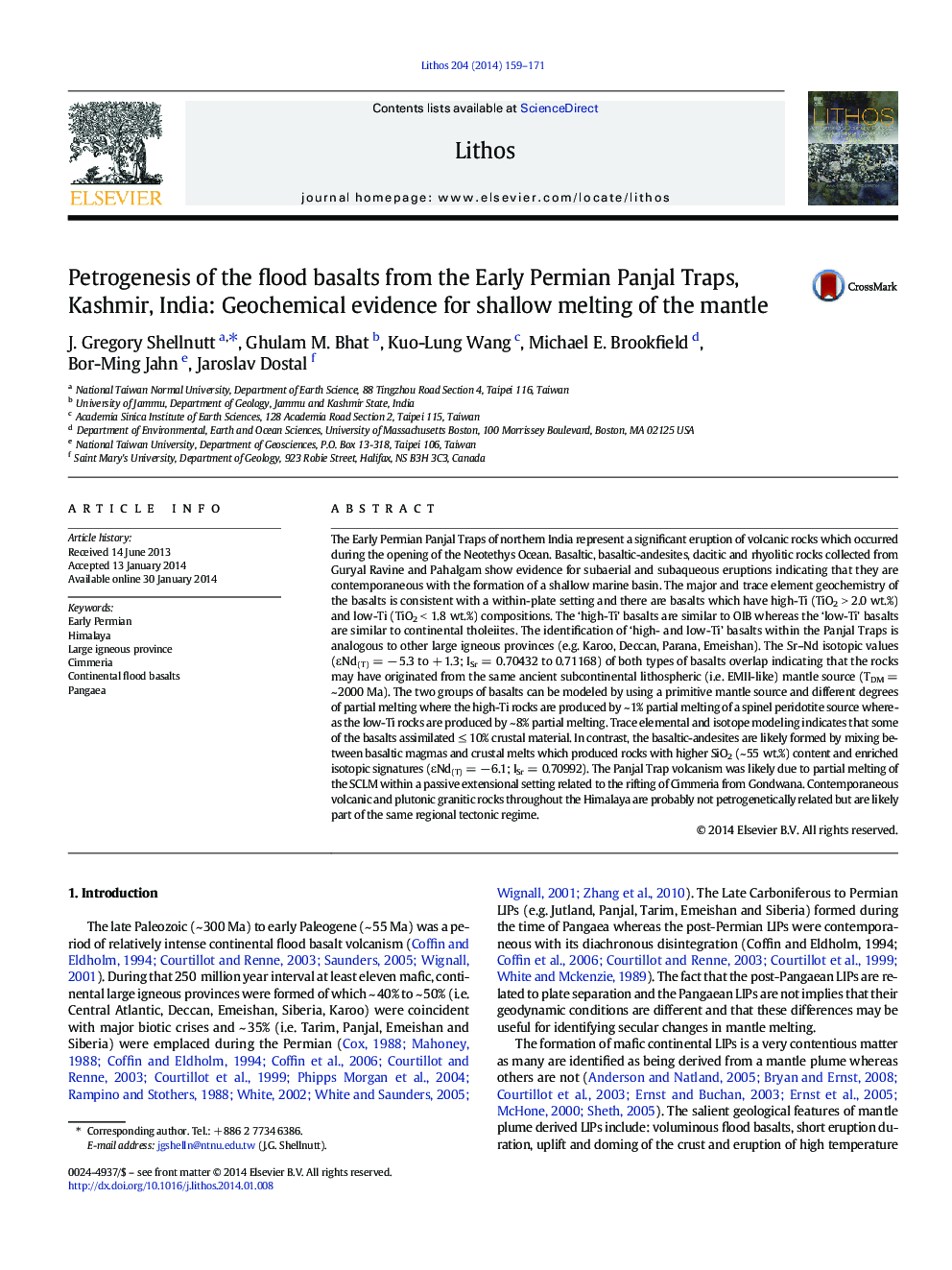| کد مقاله | کد نشریه | سال انتشار | مقاله انگلیسی | نسخه تمام متن |
|---|---|---|---|---|
| 4715858 | 1638674 | 2014 | 13 صفحه PDF | دانلود رایگان |
• The Panjal Traps are Early Permian.
• The basalts were derived from partial melting of a spinel peridotite source.
• The basaltic-andesites were derived by mixing between mafic melts and crustal melts.
• The Panjal Traps were formed in a passive extensional setting.
• The Panjal Traps are related to the rifting of Cimmeria from Gondwana.
The Early Permian Panjal Traps of northern India represent a significant eruption of volcanic rocks which occurred during the opening of the Neotethys Ocean. Basaltic, basaltic-andesites, dacitic and rhyolitic rocks collected from Guryal Ravine and Pahalgam show evidence for subaerial and subaqueous eruptions indicating that they are contemporaneous with the formation of a shallow marine basin. The major and trace element geochemistry of the basalts is consistent with a within-plate setting and there are basalts which have high-Ti (TiO2 > 2.0 wt.%) and low-Ti (TiO2 < 1.8 wt.%) compositions. The ‘high-Ti’ basalts are similar to OIB whereas the ‘low-Ti’ basalts are similar to continental tholeiites. The identification of ‘high- and low-Ti’ basalts within the Panjal Traps is analogous to other large igneous provinces (e.g. Karoo, Deccan, Parana, Emeishan). The Sr–Nd isotopic values (εNd(T) = − 5.3 to + 1.3; ISr = 0.70432 to 0.71168) of both types of basalts overlap indicating that the rocks may have originated from the same ancient subcontinental lithospheric (i.e. EMII-like) mantle source (TDM = ~ 2000 Ma). The two groups of basalts can be modeled by using a primitive mantle source and different degrees of partial melting where the high-Ti rocks are produced by ~ 1% partial melting of a spinel peridotite source whereas the low-Ti rocks are produced by ~ 8% partial melting. Trace elemental and isotope modeling indicates that some of the basalts assimilated ≤ 10% crustal material. In contrast, the basaltic-andesites are likely formed by mixing between basaltic magmas and crustal melts which produced rocks with higher SiO2 (~ 55 wt.%) content and enriched isotopic signatures (εNd(T) = − 6.1; ISr = 0.70992). The Panjal Trap volcanism was likely due to partial melting of the SCLM within a passive extensional setting related to the rifting of Cimmeria from Gondwana. Contemporaneous volcanic and plutonic granitic rocks throughout the Himalaya are probably not petrogenetically related but are likely part of the same regional tectonic regime.
Figure optionsDownload as PowerPoint slide
Journal: Lithos - Volume 204, 1 September 2014, Pages 159–171
